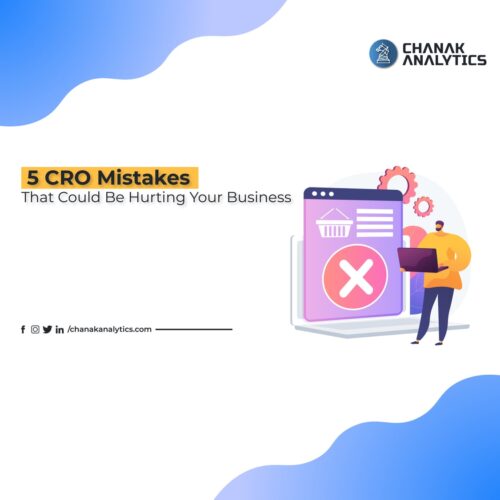Google algorithm updates can be like a sudden twist in the SEO journey. They affect search rankings, traffic, and visibility, so it is important for businesses to adapt. These updates are designed to improve user experience, but they usually leave website owners scrambling to adjust strategies. Let’s explore the impact of these updates and share actionable tips to keep your SEO game strong, even after Google shakes things up.
Spotting the Signs of an SEO Update Impact
Understanding how Google’s updates affect your website is the first step to refining your SEO strategy. Here are some of the most vital steps for monitoring and measuring that impact:
• Tools to Track Change in SEO Performance
Use reliable tools to monitor changes:
- Google Search Console: Analyses the search visibility and identifies crawl issues.
- SEMrush: Track ranking drops of keywords and traffic trends.
- Ahrefs: Track backlinks and general domain health.
• Key Indicators of Impact
Keep an eye on:
- Traffic fluctuation: Decreases or increases in the site traffic.
- Keyword rankings: Downranking is the signal of which areas to advance.
- Engagement metrics: the click-through rates are lower, and higher bounce rates indicate dissatisfied users.
Monitoring these shifts will help one identify problem areas and make the needed adjustments to an SEO strategy, keeping a website both competitive and user-friendly.
Common Website Adjustments Needed After Major Updates
Quick adjustment is very crucial for maintaining rank and visibility when Google brings out a new update! Here are some of the main changes each website needs:
• E-E-A-T Optimisation
Experience, expertise, authoritativeness, and trustworthiness (E-E-A-T) are the pillars of Google’s content guidelines, especially for YMYL (Your Money Your Life) topics like health, finance, or legal advice.
- Establish the authors’ credibility and trust.
- Include examples or case studies to make it easier to understand.
- Protect with HTTPS and user reviews to help instil trust.
• Update Content and Quality Check
Google pays for new, high-quality content. Some cleaning up really helps:
- Update the old information and add new trends.
- Declutter by removing duplicate or redundant pages.
- Remove weak or low-quality content that drags rankings low.
• Technical SEO Tweaks
Performance is everything in a post-update world. Ensure:
- Page speed is extremely fast—with smaller images and good code.
- Layouts that work well on all devices.
- Stellar core web vitals for exceptional user experience.
Being proactive with such changes ensures preparation for the waves of Google’s next update, keeping your audience happy and engaged.
Adapting to Shifts in Search Intent: The Key to Staying Relevant

Google is constantly changing its rules, thus altering how websites have to handle their SEO. One of the differences is the impact of search intent on ranking. Search intent essentially refers to the reason why a user searches for something—it’s really what they want when using a search engine. Knowledge of this intent is therefore important in producing content to satisfy users’ needs; this helps one keep in step with the updates.
There are four fundamental kinds of search intent:
- Informational: The user wants to know something—for example, “What is SEO?”.
- Navigational: The end user wants a particular website or page (like, “Facebook login”).
- Transactional: The user wants to purchase something, such as “Buy iPhone 15.”.
- Commercial: Person checks and examines several offerings under consideration or reviews before buying, “Best smartphones for 2024.”.
To adjust your content to these shifts in search intent, use these tactics:
- Make content for each purpose: Write blog posts, guides, or FAQs for questions that need information, while product pages or reviews are for buying and selling purposes
- Segment your audience: Users at different points in their buying process have different needs. Users who are just starting require educational content, while those, further along, require comparisons or product details.
- Your content must be clear and full of value: It should concern whatever the search intent may be. This way, one can increase their visibility and importance. And therefore, this kind of approach will make one’s SEO strategy comply with the updates of Google.
Mastering SEO with Real-Time Monitoring Tools
Monitoring your SEO performance after a Google update is highly important. The right tools will help you keep ahead of the game with real-time alerts on changes and SEO issues. Below is a summary of the functionality of some of the leading tools:
- Google Alerts: It notifies you when Google indexes new content relating to your keywords of choice and warns you in advance about algorithm changes.
- Moz: Provides insights into how your website ranks and how keywords are performing with alerts on significant fluctuations that result from Google updates.
- Rank Ranger: It offers real-time monitoring of your rankings across various search engines and notifies you of any declines, enabling prompt action.
These tools will enable you to identify any changes immediately and react swiftly to the posed SEO challenges, thus ensuring that your website performance remains optimised regardless of the updates. They’re extremely vital in today’s fast-paced SEO world.
Adjusting Keyword Strategy and Content Structure
After an update on the Google algorithm, you would have to review your keyword approach and adjust the content outline. Such moves would make you relevant and visible for longer.
• New Keyword Research
Start off with identifying trending search terms aligned with the latest trends. Tools such as Google Search Console or keyword planners can help in finding high-volume, low-competition keywords.
• Use fresh keywords organically in the content.
Remember that it all serves for the end result of user intent. Thus, allow keywords to flow better for a better experience for the user. You can use featured snippets when you structure your content to clearly answer questions.
• Consider Voice Search
With voice search getting more popular, it would be wise to include conversational phrases and questions in your content. This might increase the chances of getting a better ranking in voice searches.
With changing keyword strategies, your content won’t go down the drain immediately after an update.
Why Great UX is the Secret Ingredient for SEO
As Google’s ongoing changes leverage user-centric signals and optimising the user experience (UX) is increasingly seen as no longer an option but as the key to SEO’s success, optimisation of the UX must also become essential.
• Why UX Matters in SEO
A good UX has the potential to directly impact search engine results page rankings :
- Seamless navigation ensures users stay longer, reducing bounce rates.
- Faster load time helps keep visitors engaged and leads to better Core Web Vitals performance.
- Enhanced mobile design is configured for those users who access the web through their mobile phones, and thus it is compliant with Google’s mobile-first indexing guidelines.
If your site is easy to use, search engines pay attention, which improves your position in search results!
• Practical UX Enhancements for Better SEO
To keep pace with Google’s evolving focus on user satisfaction, consider these tweaks:
- Speed up the page loading with optimised images, lazy loading, and faster server response times.
- Improve readability by breaking content into smaller chunks, using clear fonts, and adding visuals.
- Orient mobile-friendly layouts that respond to different screen sizes and touch inputs.
- Provide natural CTAs and internal links so that users can easily navigate your website.
Marrying UX and SEO almost always leads to higher rankings, conversions, and ongoing website visits. Remember, happy users mean happy search engines!
How to Stay Ahead in the Ever-Changing SEO Landscape

It’s common to experience a wave of uncertainty when Google releases significant improvements. However, developing a robust SEO strategy guarantees that you will not only bounce back fast but also prosper in the long run.
• Stay Informed About Core Updates and Industry Best Practices
- Regularly monitor Google’s algorithm changes.
- Websites like Search Engine Journal and Google’s official blog are great resources.
- Engage in SEO webinars or follow experts on platforms like LinkedIn to understand trends.
- Monitor your analytics post-update. This helps you what is working and what is not.
• Develop a Flexible, Adaptive SEO Strategy
- Do not put all your SEO eggs in one basket (e.g., keyword stuffing). Diversify with high-quality content, technical SEO, and backlinks.
- Use tools like Google Search Console to spot changes and act swiftly.
- Embrace experimentation. Test strategies, track results, and be prepared to pivot as Google updates its rules.
Resilience is the result of preparation and flexibility. Staying up to date-and keeping a flexible mindset ensures that your SEO strategy will weather any algorithmic storm while keeping your website competitive.
Stay Ahead: Adapt and Thrive
SEO isn’t a one-time task—it’s an ongoing journey. Google’s updates require you to monitor performance, tweak strategies, and stay agile. Regular audits, staying informed, and prioritising user experience will help you maintain success. Think of SEO as a living strategy that evolves with your audience’s needs and search behaviours. Keep adjusting, and you’ll not just survive updates—you’ll thrive through them!
Join the community
Join our 400,000+ person community and contribute to a more private and decentralized internet. Start for free.















very informative articles or reviews at this time.